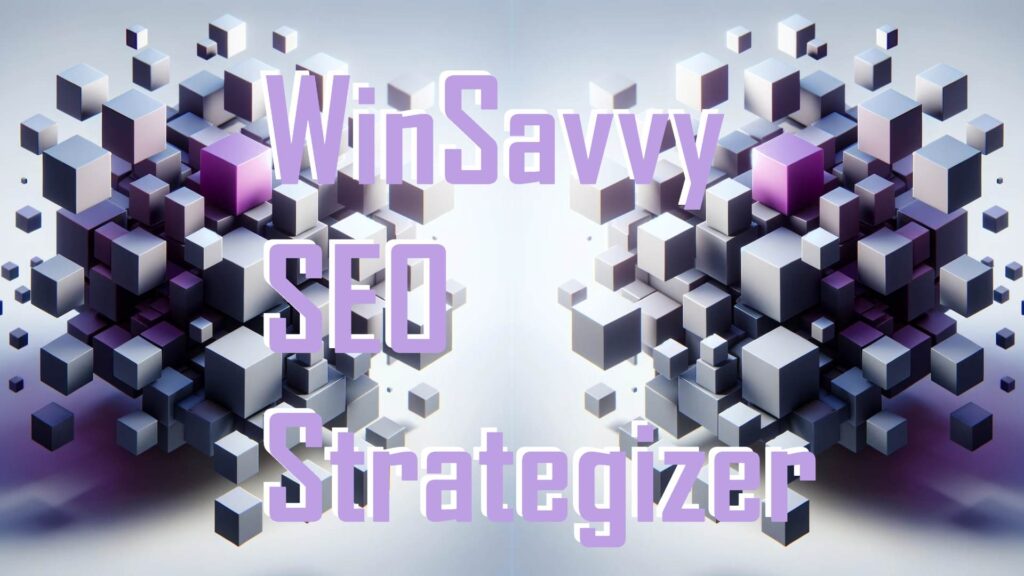Exploring Influencer Marketing Platforms
As a CEO, business owner, CMO, or marketing executive, understanding the various influencer marketing platforms can significantly enhance your marketing efforts. Here are some respected platforms that can help you connect with influencers effectively.
Sprout Social Influencer Marketing Platform
The Sprout Social Influencer Marketing Platform enables businesses to discover and manage influencer relationships seamlessly. It offers comprehensive analytics, allowing you to track the performance of your campaigns. The platform is designed with user-friendly features to facilitate smooth navigation and operation.
Upfluence AI Marketing Platform
The Upfluence AI Marketing Platform leverages artificial intelligence to help you identify and engage with the right influencers for your brand. It offers detailed profiles of influencers, giving you insights into their audience demographics and content performance. This information allows for more tailored marketing strategies.
Afluencer Marketplace
Afluencer Marketplace focuses on creating partnerships between brands and influencers. It caters to a diverse range of industries, allowing brands to easily connect with influencers who align with their values and target audience. The platform emphasizes transparency and collaboration, making it a popular choice for businesses looking for effective influencer partnerships.
Grin AI-Powered Platform
The Grin AI-Powered Platform is designed specifically for direct-to-consumer (DTC) brands. It integrates with various e-commerce platforms, enabling businesses to streamline their influencer marketing efforts. Grin’s emphasis on relationship management allows you to cultivate longer-lasting partnerships with influencers, ensuring more authentic endorsements.
Heepsy Global Search Engine
Heepsy Global Search Engine provides a robust database of influencers worldwide. Featuring advanced search filters, Heepsy allows you to find influencers based on various criteria such as location, followers, and engagement rates. This capability helps you target specific influencer segments that align with your brand’s strategy.
By exploring these influencer marketing platforms, you can enhance your brand’s outreach and improve your marketing campaigns. Utilizing these tools can help you harness the full potential of influencer marketing and stay ahead in today’s competitive market. For further insights into influencer marketing agencies and their services, feel free to explore our resources.
Key Features in Influencer Platforms
When evaluating various influencer marketing platforms, you should consider several key features that will enhance your user experience and campaign effectiveness.
User-Friendly Interface
A user-friendly interface is essential for a seamless experience when navigating influencer platforms. An intuitive layout enables you to easily manage your campaigns, search for influencers, and analyze results without confusion. This efficiency can save you significant time and resources, allowing you to focus more on strategy and less on troubleshooting.
Expansive Database and Verification
An expansive influencer database is critical for finding the right partners for your marketing efforts. Platforms should offer verified influencer metrics to ensure that you’re working with legitimate accounts. Verified numbers reflect accurate follower counts and engagement rates, helping you make informed decisions when selecting influencers for your campaigns. By using platforms that prioritize verification, you can avoid wasted investment in influencers who don’t deliver results.
Reporting and Analytics Tools
Strong reporting and analytics tools are vital for assessing the performance of your influencer campaigns. These features provide you with insights into essential metrics, helping you understand what works well and what needs improvement. With proper analytics, you can track engagement and return on investment (ROI), ultimately refining your digital marketing strategies.
| Metric | Explanation |
|---|---|
| Engagement Rate | Measures the level of interaction (likes, comments, shares) relative to total followers. |
| Return on Investment (ROI) | Assesses the profitability of your campaigns against the costs incurred. |
| Conversion Rate | The percentage of users who take the desired action after engaging with your content. |
Advanced Search Filters
Utilizing advanced search filters allows you to fine-tune your selection of influencers based on specific criteria such as niche, audience demographics, and engagement levels. Tailoring your search ensures that you align the right influencers with your unique project goals, maximizing the relevance and effectiveness of your campaigns. This tailored approach enhances the likelihood of successful partnerships and campaign performance.
Responsive Customer Support
Lastly, responsive customer support is crucial in assisting you with any issues that arise during the use of influencer marketing software. Having reliable guidance ensures that you can effectively utilize all features of your chosen platform. Quick and knowledgeable support can help you resolve difficulties, allowing you to focus on implementing successful marketing campaigns without unnecessary delays.
By prioritizing these key features, you can choose the right influencer marketing platforms that align with your business objectives, ultimately improving your marketing efforts.
Influencer Marketing Campaign Strategies
When you consider adopting influencer marketing platforms for your business, it’s essential to leverage effective campaign strategies. Here are some popular methods to engage your audience and maximize the potential of influencer partnerships.
Giveaways and Contests
Giveaways and contests are powerful tools in influencer marketing. When you partner with influencers to organize a giveaway, it encourages participation and boosts visibility for your brand. According to research, 65% of marketers use giveaways as a way to engage with their audience (Sprout Social).
| Campaign Type | Percentage of Marketers Using It |
|---|---|
| Giveaways | 65% |
| Product Collaborations | 62% |
| Affiliate Campaigns | 57% |
Giveaways can help you increase your follower count, generate leads, and create excitement around your product. Consider setting clear rules and eligibility requirements to attract the right participants.
Product Collaborations
Partnering with influencers for product collaborations can elevate your brand image and increase consumer trust. A notable example is McDonald’s collaboration with Travis Scott, which featured a limited-time meal deal and exclusive merchandise. This campaign generated over 124.4K posts and 426 million impressions, showcasing how such collaborations can create significant social media buzz (Keyhole).
By involving influencers in product design or marketing, you not only broaden your reach but also tap into the influencer’s established audience. Collaborative efforts often lead to unique content that resonates well with consumers.
Affiliate Campaigns
Affiliate marketing campaigns enable influencers to earn commissions on sales generated through their promotions. By integrating affiliate links into their content, influencers can track the success of their promotional efforts. Approximately 57% of marketers utilize this approach in influencer marketing (Sprout Social).
To implement successful affiliate campaigns, ensure the influencers you partner with align with your brand values. Provide them with unique promo codes or tracking links to help measure the effectiveness of the campaign while incentivizing them through commission structures.
Sponsored Posts
Sponsored posts remain a staple in influencer marketing strategies. By paying influencers to create content that features your brand or products, you gain immediate exposure to their audience. It is essential to ensure that the sponsored content feels authentic to maintain audience trust.
Influencer platforms can help you connect with influencers willing to engage in sponsored posts, making it easier to find the right match for your brand. Leveraging these posts can enhance brand awareness and stimulate interest among potential customers.
Utilizing these influencer marketing strategies can help you effectively connect with your target audience and drive business growth. For further insights into enhancing your marketing efforts, check out our guide on digital marketing types.
Influencer Marketing KPIs
Measuring the effectiveness of your influencer marketing efforts is crucial to ensure you’re getting the maximum return on your investment. Here are some key performance indicators (KPIs) to track:
Earned Media Value (EMV)
Earned Media Value (EMV) serves as an essential metric for estimating the return on investment (ROI) of your influencer campaigns. Many marketing professionals consider influencer marketing to be more valuable than traditional paid media, with an estimation that it is 10.52 times more cost-effective (Meltwater). EMV helps measure how much media exposure you’ve gained through the influencers involved in your campaigns.
| EMV Metric | Estimated Value |
|---|---|
| Cost-Effectiveness Ratio | 10.52X more valuable |
Cost Per Acquisition (CPA)
Cost Per Acquisition (CPA) helps you understand the average cost of acquiring a customer through your influencer marketing efforts. This metric is determined by dividing the total costs of the campaign by the number of new customers gained as a direct result of the influencer promotions. Monitoring CPA can help you refine your strategies for better efficiency.
Return on Investment (ROI)
The Return on Investment (ROI) of influencer marketing is crucial. It can be measured by comparing the total revenue generated from the campaign to the amount spent on influencer collaborations (Digital Marketing Institute). A positive ROI indicates that your influencer campaign was financially successful.
| ROI Formula | Formula Description |
|---|---|
| ROI = (Net Profit / Cost of Investment) x 100% | A higher percentage indicates better performance |
Engagement Rate
Engagement Rate is a vital KPI that measures how well your audience interacts with content shared by influencers. This metric is essential for evaluating the effectiveness of influencer partnerships. A higher engagement rate signifies that the audience is responding positively to the content and is likely to take further steps, such as visiting your website or purchasing your product.
| Engagement Rate Calculation | Description |
|---|---|
| (Total Engagements / Total Followers) x 100% | Measures interaction levels with your content |
Conversion Rate
The Conversion Rate indicates the percentage of users influenced by an influencer’s content to take specific actions, such as making a purchase or signing up for a service (Digital Marketing Institute). A higher conversion rate underscores the effectiveness of your influencer partnerships in driving sales.
| Conversion Rate Formula | Formula Description |
|---|---|
| (Number of Conversions / Total Visitors) x 100% | The higher the percentage, the better your campaign performance |
By tracking these KPIs, you can gain actionable insights into the performance of your influencer marketing platforms and adjust your strategies for better outcomes. For more detailed discussions on integrating various marketing strategies, consider exploring digital marketing agencies or social media marketing strategies.
Consumer Insights in Influencer Marketing
Understanding consumer insights is essential for maximizing the effectiveness of influencer marketing platforms. This section will cover social media platform preferences, the influence of brands on consumer purchasing, and the impact of brand recommendations.
Social Media Platform Preferences
Social media platform preferences vary significantly across different age groups. For example, recent survey data indicates notable shifts in platform rankings between 2024 and 2025, with Instagram moving up to the second position while Facebook dropped to third. TikTok fell to fourth, and X (formerly known as Twitter) was replaced by Snapchat on the list of favored platforms for influencer content consumption (Traackr).
| Rank | Year | TikTok | X (Twitter) | Snapchat | ||
|---|---|---|---|---|---|---|
| 1 | 2024 | 1 | 2 | 3 | 4 | 5 |
| 2 | 2025 | 2 | 3 | 4 | N/A | 5 |
This data reflects the dynamic nature of social media engagement and highlights the importance of selecting the right platforms for influencer campaigns.
Influence on Consumer Purchasing
Influencer marketing has transformed how consumers discover and research products. In the latest Influencer Marketing Impact Report, it was noted that 58% of consumers now rely on influencers for product recommendations, marking a 2% increase from the previous year (Traackr). This shift indicates that traditional channels, such as Google, are no longer the primary means of product discovery.
| Source of Product Discovery | Percentage of Consumers |
|---|---|
| Influencers | 58% |
| N/A |
These insights emphasize the need for brands to leverage influencer marketing to enhance their visibility and credibility in the digital marketplace.
Brand Recommendations Impact
The power of influencers extends not just to recommendations but also to how consumers engage with new platforms. A compelling statistic reveals that 61% of consumers are likely to try a new social platform if an influencer they trust promotes it (Traackr). This showcases the substantial role that influencers play in shaping consumer behavior.
Furthermore, successful influencer collaborations, such as McDonald’s partnership with Travis Scott, demonstrate the impact on brand awareness and consumer engagement. The campaign generated over 124.4K posts and 426 million impressions, illustrating the effectiveness of influencer initiatives (Keyhole).
Understanding these consumer insights allows you to strategically tailor your campaigns, maximize engagement, and foster meaningful connections between your brand and consumers. For more strategies on enhancing your marketing efforts, consider exploring various types of marketing through our guide on digital marketing types.
Integrating Influencer Marketing and Traditional Advertising
Combining influencer marketing with traditional advertising presents numerous advantages that can enhance brand visibility and consumer engagement.
Benefits and Strategic Integration
Integrating influencer marketing and traditional advertising can significantly amplify your brand messaging. Utilizing influencers in TV commercials or incorporating influencer-generated content in print ads can maximize impact on your target audience. Such strategic integration allows for a more diverse marketing approach that resonates with different segments of consumers. For instance, influencer content can reach audiences who might otherwise overlook traditional ads.
| Benefits of Integration | Description |
|---|---|
| Amplified Brand Messaging | Boosts the effectiveness of campaigns by merging modern and traditional tactics. |
| Wider Reach | Reaches various demographics through multiple formats, such as television and social media. |
| Increased Credibility | Influencers add personal touch and authenticity, enhancing trust in the brand. |
Impact on Brand Messaging
The inclusion of influencers helps bypass ad blockers, allowing brand messages to reach audiences more effectively. Consumers often engage with content shared by influencers voluntarily; they are more likely to trust and accept messages delivered this way compared to traditional advertisements. Unlike conventional advertising methods, which can feel intrusive, influencer marketing conveys authenticity and relatability.
| Impact on Brand Messaging | Description |
|---|---|
| Voluntary Engagement | Consumers choose to engage with influencer messages, increasing receptivity. |
| Authentic Communication | Influencers represent the brand in a genuine manner, fostering trust. |
| Enhanced Message Recall | Audiences are more likely to remember messages delivered through influencers. |
Target Audience Engagement
Effectively merging influencer marketing with traditional advertising can lead to improved engagement with your target audience. Integrated campaigns that leverage the strengths of both marketing methods often yield better results. For example, showing influencers in TV ads can create a more relatable context for the audience, whereas sharing those same ads on social media platforms can spark conversations and additional engagement.
| Engagement Strategies | Description |
|---|---|
| Integrated Campaigns | Combines influencer content with traditional ads for maximum effect. |
| Multi-Channel Approach | Utilizes various platforms to engage audiences and broaden outreach. |
| Community Building | Influencer interactions create a sense of community around the brand. |
By considering these factors, you can effectively implement influencer marketing platforms to extend the reach and significance of your overall marketing strategies.
Influencer Marketing Industry Insights
Understanding the landscape of influencer marketing is essential for optimizing your business strategies. This section discusses market value, effectiveness comparison, and return on investment (ROI) in influencer marketing platforms.
Market Worth and Growth
The influencer marketing industry has experienced significant growth, with an estimated market worth of $21.1 billion as of 2023. This figure reflects the increasing recognition of influencers’ effectiveness in advertising. Notably, 17% of companies allocate more than half of their marketing budgets specifically to influencer marketing strategies (Meltwater). By 2025, projections indicate that the market will double, reaching approximately $24.1 billion, highlighting the growing reliance on this channel.
| Year | Market Value (in billions) |
|---|---|
| 2023 | $21.1 |
| 2025 (Projected) | $24.1 |
Effectiveness Comparison
The effectiveness of influencer marketing is underscored by its strong return on investment. Currently, every dollar spent on influencer campaigns yields an average return of $6.50. Additionally, 40% of online shoppers report purchasing a product after seeing it featured by an influencer on social platforms like Instagram, Twitter, or YouTube (Keyhole).
A critical component of this effectiveness is trust. With only 1% of millennials trusting traditional advertisements, influencers who engage with genuine and authentic voices tend to drive more engagement and influence purchasing decisions. In fact, 33% of consumers trust blog reviews more than ads. Hence, authenticity plays a crucial role in crafting successful influencer marketing campaigns.
ROI Value
The financial return of influencer marketing is linked not only to direct sales but also to overall brand perception and customer loyalty. The substantial ROI illustrates the alignment of influencer partnerships with consumer preferences and behaviors. Brands can strategically leverage influencer marketing to create a relatable image and tap into new audiences, utilizing insights from digital marketing agencies for guidance on optimizing these campaigns.
In conclusion, understanding the market worth, efficacy, and ROI of influencer marketing platforms can provide an invaluable framework for you to dominate your niche, driving growth and sales effectively while engaging meaningfully with your target audience.
Building and Operating Influencer Marketing Platforms
As you consider establishing or improving your influencer marketing platform, it’s essential to understand the challenges, key features, and pricing models involved.
Challenges and Solutions
Influencer marketing platforms encounter various obstacles in their operations. According to Clearcode, common challenges include:
- Reaching Influencers: Finding and engaging with big-name influencers can be difficult.
- Content Quality Control: A lack of human oversight may result in inconsistent content quality.
- Identifying the Right Influencers: Many marketers struggle to pinpoint the best influencers for their specific campaigns, with 61% confirming this issue.
To mitigate these challenges, platforms can implement advanced search and filtering functionalities that make it easier for businesses to locate suitable influencers, as well as onboarding procedures that include guidelines for content quality.
Key Features and Functionality
Influencer marketing platforms must incorporate essential features to be effective and user-friendly. Key functionalities include:
| Feature | Description |
|---|---|
| Search and Discovery Engine | Helps users find relevant influencers based on niche, reach, and audience demographics. |
| Contact and Relationship Management | Automates communications between brands and influencers, streamlining collaboration. |
| Social Media Integration | Connects platforms with various social media channels for campaign management. |
| Campaign Content Management | Allows brands to manage and schedule campaign content efficiently. |
| Influencer Compensation Management | Simplifies payment processes for influencer services. |
| Analytics and Reporting | Provides insights into campaign performance and ROI tracking. |
These features ensure that brands can manage their influencer engagements effectively and gain valuable insights on impact and effectiveness. For more information on integrated marketing strategies, see our article on integrated marketing communications.
Pricing Models and Influencer Earnings
Understanding the pricing models used by these platforms is critical for setting budgets and managing expectations. Influencer marketing platforms commonly adopt several pricing structures:
- Cost-Per-Mille (CPM): Charges brands based on the number of impressions or times the content is viewed.
- Cost-Per-Acquisition (CPA): Involves payment based on the number of conversions or sales generated by influencer marketing efforts.
- Cost-Per-Click (CPC): Charges brands for every click their content receives.
- Fixed Costs: Set fees for specific campaigns or services.
Influencer earnings can fluctuate based on multiple factors, including the platform used, the influencer’s follower size, engagement rate, and audience demographics. As the influencer marketing industry is worth an estimated $21.1 billion as of 2023, many influencers garner substantial income through these platforms. For deeper insights into influencer marketing, explore our piece on influencer marketing agencies.





















